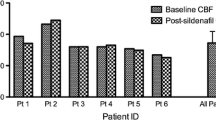Summary
¶Background. Brain natriuretic peptide (BNP) is a potent natriuretic factor responsible for hyponatremia observed in patients with SAH. Through its systemic effects (reduction of blood volume and blood pressure) BNP may augment cerebral blood flow reduction and ischemia secondary to vasospasm.
The purpose of the present study was to evaluate the relationship between BNP plasma concentration during the first 12 days following SAH and the development of cerebral vasospasm (CVS). The authors propose a hypothesis for the role played by natriuretic peptides in the pathophysiology of cerebral vasospasm based on the present findings and review the literature.
Methods. Thirty eight patients with spontaneous SAH were prospectively included in the present study. BNP plasma concentrations were assessed at four different time periods following SAH (day 1–3, 4–6, 7–9, 10–12). TCD evidence of CVS was found in 26 patients (68.5%), fourteen patients (36.8%) had delayed ischemic neurological deficits (DIND).
Findings. Initial BNP plasma concentrations were significantly more elevated in patients who eventually did not develop DIND (95.07±107.65 pg/ml vs. 25.81±22.57 pg/ml, p=0.0053). However, in patients with DIND, the BNP plasma concentration increased by 3.69 (p<0.05), 5.89 (p<0.001) and 4.54 fold (p<0.001) between days 1–3 to days 4–6, 7–9 and 10–12 respectively (day 1 was regarded as the day of hemorrhage). In patients without CVS or asymptomatic CVS the BNP plasma concentration decreased between days 1–3 to day 10–12. A similar trend in BNP plasma concentration was found in patients with severe SAH (Fisher’s score 3–4) as compared with patients with non visible or moderate SAH (BNP concentration ratio day 7–9/1–3: 4.37 vs. 0.75, p=0.015; day 10–12/1–3: 3.37 vs. 0.3, p=0.0144). The trend in BNP plasma concentration between day 1–3 to day 7–9 was found to correlate with CVS severity with an average increase of 2.01, 3.8 and 5.44 fold for mild, moderate and severe VS respectively (p<0.01, r=0.4174).
Interpretation. These results suggest that BNP secretion in SAH patients is closely related to the bleeding intensity and vasospasm severity as well as to development of DIND with a progressive and marked increase during the clinical course in patients who eventually develop cerebral ischemia. Taken together the local and systemic effects of BNP on CBF suggest that BNP might play a role in the pathophysiology of CVS through its systemic effects on blood pressure and plasma volume BNP leading to an aggravation of brain ischemia secondary to vasospasm.
Similar content being viewed by others
Author information
Authors and Affiliations
Additional information
Published online September 18, 2003
Rights and permissions
About this article
Cite this article
Sviri, G., Shik, V., Raz, B. et al. Role of brain natriuretic peptide in cerebral vasospasm. Acta Neurochir 145, 851–860 (2003). https://doi.org/10.1007/s00701-003-0101-7
Issue Date:
DOI: https://doi.org/10.1007/s00701-003-0101-7




